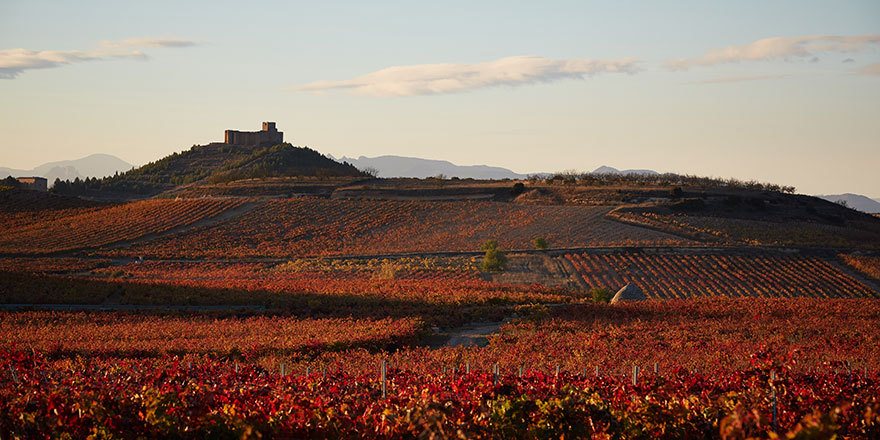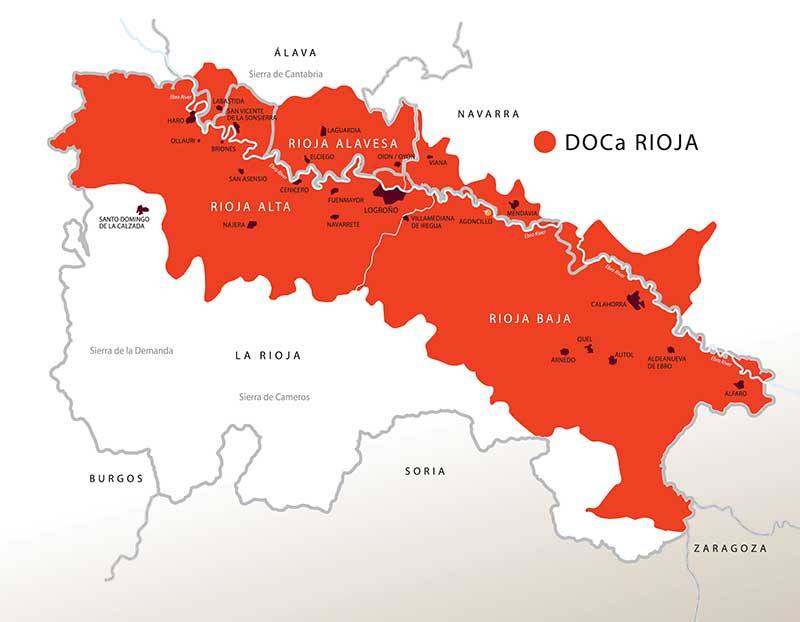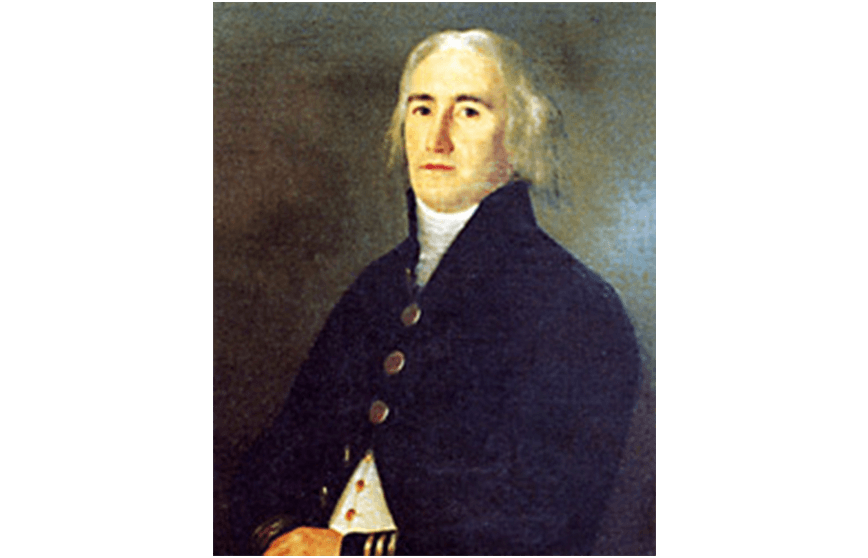In previous publications we have talked about the grapes from the Rioja D.O.Ca, of their ageing, and corresponding categories, as well as the best option, always a priori, for each social occasion.

We haven’t missed a trick!
Having said that, we have still not explained how it all began.
As the D.O.Ca Rioja is considered to be one of the most sought-after and prestigious wine regions on the planet, we are going to comment on the origin of the liquid legend that is Rioja wine.
The history of Riojan wines covers the long and varied tradition of winemaking in the Spanish region of the Ebro Valley, covering the area between the Obarenes Mountains, the Sierra de Cantabria to the north and the Sierra de la Demanda to the south.
During the Middle Ages the growing of vines was very much linked to the Church and Monasteries, as occurred in many other European viticultural areas, without doubt due to the significance of wine in the Christian religion.

Until the 15th Century the wine produced by Riojan vinegrowers was mainly for private consumption, as the majority came from tithes to churches and monasteries, as well as the their abundant vineyards.
Trade grew considerably, as Rioja increased its production way beyond the needs of self-sufficiency.
The commerce in Riojan wines was limited by land transport, although there was proof of the sale of wine in Italy, France and Flanders via the Port at Bilbao, the export of wine was far exceeded by the trade in Riojan wool and did not reach the levels seen in other areas such as Port and Bordeaux that were advantaged by maritime and river transport. Rioja would have to wait until the arrival of the railway in the 19th Century.
But, really, Rioja did not surface until the phylloxera epidemic (an insect that attacks vine roots), which affected French vineyards at the end of the 19th century, as it would take several more decades for Spanish region to be infested.
And this was the turning point that marked a drive forward in terms of the expansion and modernisation of the wine industry, both through being open to the French market, as well as due to the popularisation of new winemaking techniques, some of which arrived with French winemakers who were looking for new lands that were unaffected by the epidemic.
This continued until 1925, a year in which the region was recognised as a Designation of Origin, the first to be constituted in Spain.

Having said this we are going to stop to go back over a few key moments.
For example, the oldest remaining document that refers to the existence of vines in Rioja dates back to 873. It comes from the San Millán Cartulary and refers to a donation that was made by the San Andrés de Trepeana Monastery where there were some vines.
Viticulture was not referred to again for another two centuries, when we find the «Longares population charter,» granted by Don Gómez, Bishop of Nájera, in July 1063. This levied a serfdom on the locals in favour of the San Martín de Albelda Monastery, of «two days of ploughing, two days of digging, two days of planting, two days of cutting and one of harvesting.»
But aside from these anecdotes you have to travel forward to the 18th Century, when Manuel Quintano, canon of Burgos Cathedral, learnt the winemaking techniques used in the Médoc region in France, during a trip there in 1787.

Take note, we are talking of a time when Bordeaux was just about to achieve worldwide fame thanks to Thomas Jefferson who was US ambassador in France and was responsible for the bottling of the mythical sweet white wine, Château d´Yquem.
In fact, the Thomas Jefferson 1787 collection was one of the highest priced wine collections in history, with bottles at more than 200,000 euros.
Returning to Don Manuel, once in Spain he put the new techniques described in his «Method for making wine in Bordeaux» – what he had learnt in that city – into practice in his viticultural operation in Labastida. It was a complicated year due to high rainfall during the vegetative period. But he cleaned the grapes before pressing, controlled the fermentation temperature, carried out rackings and clarified the wine with egg white. Crushing the bunches, he removed the stalks to give longer-lasting wines (wines with higher total acidity and lower pH than if whole bunches were barrelled.) Racking removed the dregs that gave wines a coarse character and the use of barrels to store and transport wine avoided the unpleasant flavour of wineskins. Recommendations were also included on growing vines, the need to use the most select grapes in the production and the formula for sugar enrichment, by adding a part of previously boiled must to the fermenting grapes.
This was pure R&D.
The results were very well received and the king granted him authorisation to export wines to America, with the privilege of being considered wines from Castille, in order to avoid certain taxes and commercial hurdles. 1863 marked a great change in the structure of ownership in Rioja, as the small vine grower was key to sustaining the wine sector until investment from private enterprises came in. Successive disentailments of large properties belonging to the clergy transferred rural ownership to the rising middle classes and to many medium-sized vine owners who were responsible for the spectacular growth of Rioja’s vineyard area in the last third of the 19th Century.
This, in the understanding of the Riojan winery owners, was against their interests, as the majority could not adapt these techniques to suit their wineries. Initiatives to improve the grapes with the objective of favouring business arose. In 1862, the provincial council of Alava contracted Jean Pineau, famed oenologist from Bordeaux, to instruct winemakers in the production and ageing of wines.
So, that was the situation until the arrival of the middle of the 19th Century, when Luciano Murrieta put the knowledge he had acquired – once again in Bordeaux – into practice into the Duque de la Victoria winery in Logroño, owned by his friend and business partner, Baldomero Espartero, who was in exile in London.
These wines were the first in Rioja to be produced fully with Bordelaise techniques and they were known as fine wines. He had great success and in 1852 created the Marqués de Murrieta winery in the Ygay estate that he would acquire in 1877. 1852 is the first vintage to be produced by LM and was exported to Mexico and Cuba from Rioja.
I’m sure you recognise the name.
